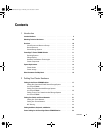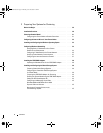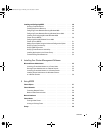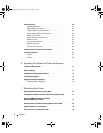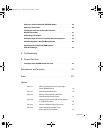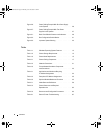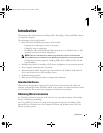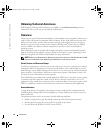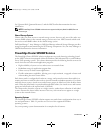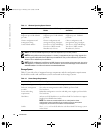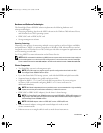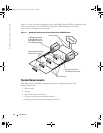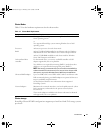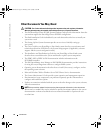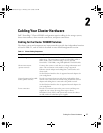
10 Introduction
www.dell.com | support.dell.com
Obtaining Technical Assistance
Dell Enterprise Training and Certification is available; see www.dell.com/training for more
information. This service may not be offered in all locations.
Overview
Clustering uses specific hardware and software to join multiple systems together to function as a
single system and provide an automatic failover solution. If one of the clustered systems (also
known as cluster nodes, or nodes) fails, resources running on the failed system are moved (or
failed over) to one or more systems in the cluster by the Microsoft
®
Cluster Service (MSCS)
software. MSCS is the failover software component in specific versions of the Windows
operating system.
When the failed system is repaired and brought back online, resources automatically transfer
back (or fail back) to the repaired system or remain on the failover system, depending on how
MSCS is configured. See "Failover and Failback" for more information.
NOTE: Reference to Windows Server 2003 in this guide implies reference to both Windows Server 2003
Enterprise and Windows Server 2003 Enterprise x64 Editions, unless explicitly stated.
Virtual Servers and Resource Groups
In a cluster environment, you do not access a physical server; you access a virtual server, which is
managed by MSCS. Each virtual server has its own IP address, name, and hard drive(s) in the
shared storage system. MSCS manages the virtual server as a resource group, which contains the
cluster resources. Ownership of virtual servers and resource groups is transparent to users. See
"Groups" for more information on resource groups.
When MSCS detects a failed node or failed application, MSCS moves the entire resource group
to another node and remaps the virtual server to the new network connection. Users of an
application in the virtual server experience only a momentary delay in accessing resources while
MSCS re-establishes a network connection to the virtual server and restarts the application.
Quorum Resource
A single disk, which is designated as the quorum resource, maintains the configuration data
(including all the changes that have been applied to a cluster database) necessary for recovery
when a node fails.
The quorum resource can be any resource with the following attributes:
• Enables a single node to gain and defend its physical control of the quorum resource
• Provides physical storage that is accessible by any node in the cluster
• Uses the Microsoft Windows NT
®
file system (NTFS)
se500wbk1.book Page 10 Thursday, June 16, 2005 4:19 PM




